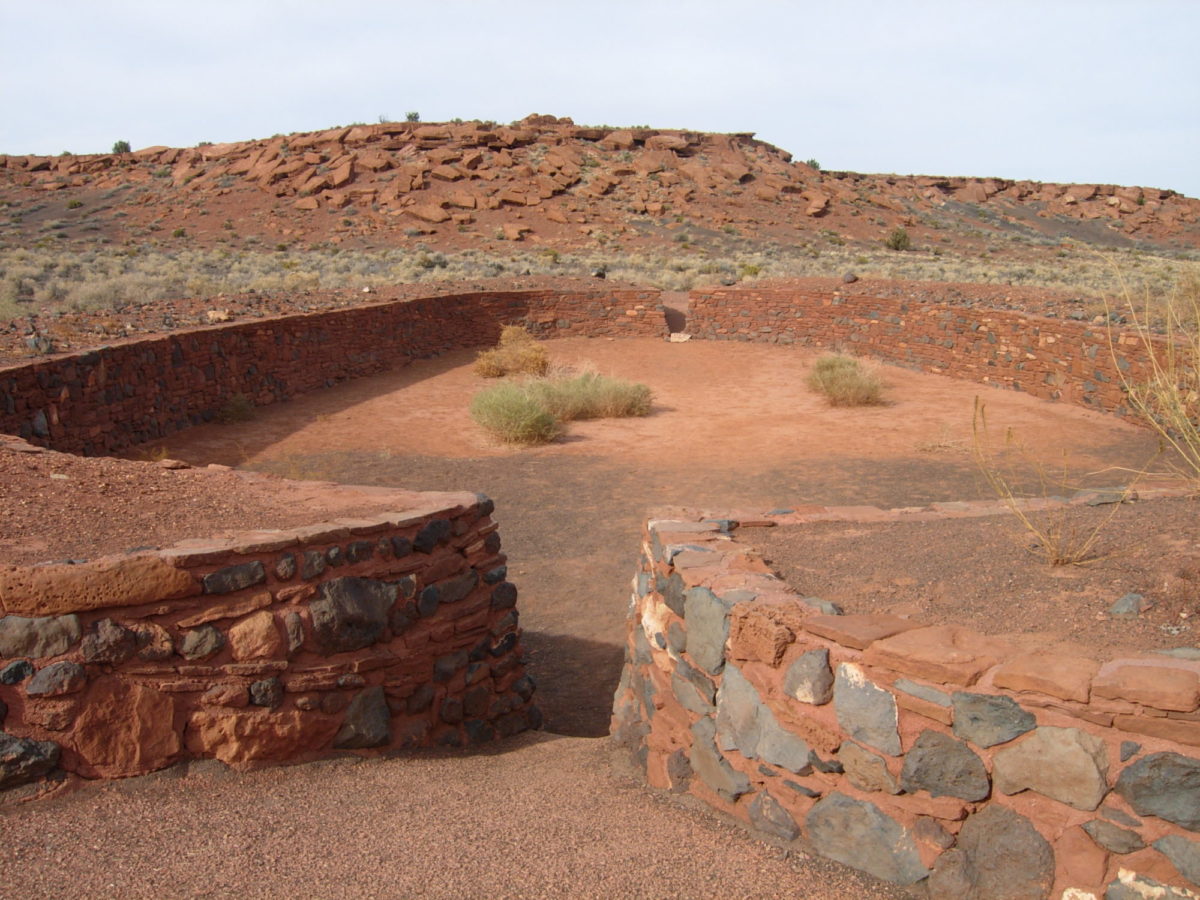

The Mogollon Indians were initially hunter-gatherers, but as their civilization advanced, the Mogollon acquired corn, squash, beans, tobacco, and cotton from Mesoamerica. The Mogollon culture eventually expanded to the southern rim of the Colorado Plateau. Mogollon: The Mogollon (mo-ge-yon) people occupied mountainous areas of Arizona and New Mexico in approximately 200 B.C. The first farmers on the Colorado Plateau spoke a language that later become the language of the Hopi. Stephen Lekson, History of the Ancient Southwest, provides growing evidence of a mass migration of Uto-Aztecan speaking people from Mesoamerica arriving with corn in the southwest as early as 1650 B.C. Wolfman Panel with Mesoamerican Copper Bells Many archaeologists agree on a wide trade network between the Southwest Indians and Mexico, especially with the Toltec, but discount an Anasazi migration from Mexico these archaeologists believe the Southwest Indians emerged out of the desert archaic period (Stone). The Southwest Indians traded turquoise to Mesoamerican Indians, primarily the Toltec, for parrot feathers, copper bells, maize (corn), beans, squash, and cotton as is shown in the Wolfman Panel (Taylor). To varying degrees, the Anasazi, Hohokam, Sinagua, and Mogollon were influenced by Indians of central Mexico, especially the Toltec. Except dogs and turkeys, these prehistoric tribes did not have domesticated animals, a system of writing, or the wheel. The prehistoric Southwest Indians exhibited cultural similarities, but had distinct languages and political unity. The Southwest Pueblo Indians of today are direct decedents of Prehistoric Indian cultures that raised corn (5600 B.C.), hand irrigated fields, and built massive stone structures in Chaco Canyon, Mesa Verde, Cedar Mesa, Montezuma Castle, and Casa Grande hundreds of years before the first recorded Europeans saw North America.

The corn provided a stalk for the beans and squash provided ground cover to reduce water evaporation. Corn, beans, and squash become so important in Indian cultures they were known as… The Three Sisters. and one hundred A.D., the Southwest Indians turned toward agriculture to supplement their food source.

During the late Archaic period, corn and then beans and squash from Mesoamerica provided the means for a semi-settled village lifestyle. Four Corners Area The Anasazi, Mogollon, Sinagua, and Hohokam Indians did not range over the vast distances covered by the earlier Archaic Indian big game hunters of the late Pleistocene period. The Fremont and Anasazi Cultures overlapped in Utah and Colorado. A seventh culture, the Fremont Indians from the Great Basin settled primarily in Utah in 400 A.D. The Hopi live on the Three Mesas of Central Arizona. The Hohokam, Sinagua and Salado are often considered the same cultures living in different areas: the Hohokam central to southern Arizona the Salado in the Tonto Basin of southern Arizona Sinagua central Arizona to the Flagstaff area of northern Arizona. and 400 A.D., six Indian cultures settled in the american southwest: Anasazi, Mogollon, Hohokam, Salado, Sinagua, and Hopi (Lekson). Southwest Anasazi Indian Culture History Maps by Ned Eddins Thefurtrapper Article Catagories: Mountain Men American Indians Exploration Emigration Trails Forest Fires Historical Novels: Mountains of Stone The Winds of Change Pre-Historic Native Americans: Anasazi Fremont Indians Mesa Verde Hovenweep Southwest Rock Art Betatakin-Kiet Siel Monument Valley Cedar Mesa-Grand Gulch Barrier (Horseshoe) Canyon Paleo-Indians Meso-American Indians Indian Cultures: Indian Horse Indian Smallpox Indian Trade Guns Trail of Tears Trade Beads Indian Alcohol Internal Page Links: Anasazi Mogollon Hohokam-Sinagua Pueblo Phase Chaco Canyon Demise of Southwest Indian Cultures Between 1650 B.C.


 0 kommentar(er)
0 kommentar(er)
